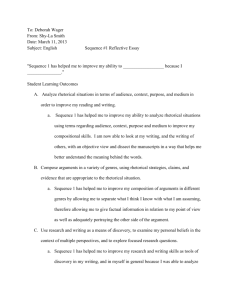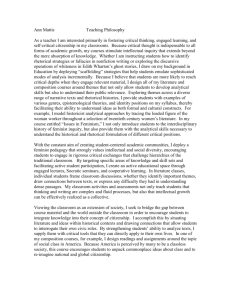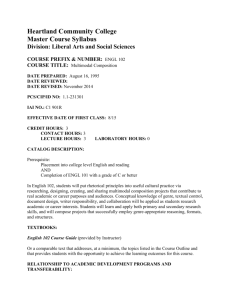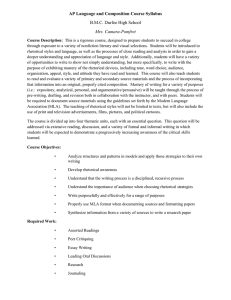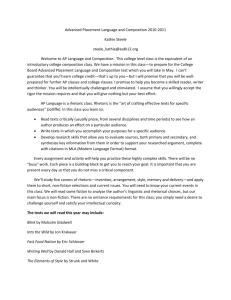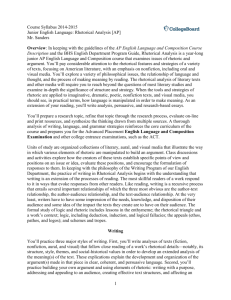Unit One: Texts in Action
advertisement
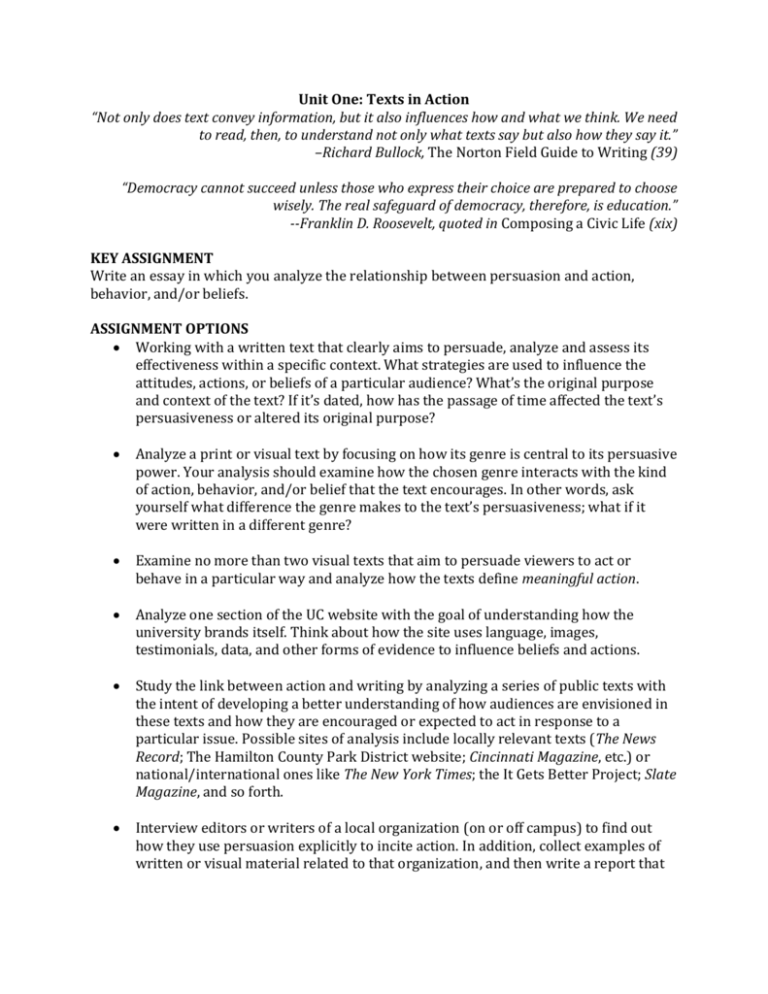
Unit One: Texts in Action “Not only does text convey information, but it also influences how and what we think. We need to read, then, to understand not only what texts say but also how they say it.” –Richard Bullock, The Norton Field Guide to Writing (39) “Democracy cannot succeed unless those who express their choice are prepared to choose wisely. The real safeguard of democracy, therefore, is education.” --Franklin D. Roosevelt, quoted in Composing a Civic Life (xix) KEY ASSIGNMENT Write an essay in which you analyze the relationship between persuasion and action, behavior, and/or beliefs. ASSIGNMENT OPTIONS Working with a written text that clearly aims to persuade, analyze and assess its effectiveness within a specific context. What strategies are used to influence the attitudes, actions, or beliefs of a particular audience? What’s the original purpose and context of the text? If it’s dated, how has the passage of time affected the text’s persuasiveness or altered its original purpose? Analyze a print or visual text by focusing on how its genre is central to its persuasive power. Your analysis should examine how the chosen genre interacts with the kind of action, behavior, and/or belief that the text encourages. In other words, ask yourself what difference the genre makes to the text’s persuasiveness; what if it were written in a different genre? Examine no more than two visual texts that aim to persuade viewers to act or behave in a particular way and analyze how the texts define meaningful action. Analyze one section of the UC website with the goal of understanding how the university brands itself. Think about how the site uses language, images, testimonials, data, and other forms of evidence to influence beliefs and actions. Study the link between action and writing by analyzing a series of public texts with the intent of developing a better understanding of how audiences are envisioned in these texts and how they are encouraged or expected to act in response to a particular issue. Possible sites of analysis include locally relevant texts (The News Record; The Hamilton County Park District website; Cincinnati Magazine, etc.) or national/international ones like The New York Times; the It Gets Better Project; Slate Magazine, and so forth. Interview editors or writers of a local organization (on or off campus) to find out how they use persuasion explicitly to incite action. In addition, collect examples of written or visual material related to that organization, and then write a report that incorporates your findings from the interviews and analyzes how the examples address the purpose and function of the organization. Other options as determined by your instructor ASSIGNMENT GOALS To recognize the power of language to move people to action, whether action takes a public or private form To understand which rhetorical strategies are frequently used to motivate people to act To identify the powerful relationships between communication, action, and democracy To develop strategies for generating writing that inspires action To learn about rhetoric and rhetorical strategies and to apply that knowledge in writing To recognize rhetorical strategies as purposeful, deliberate choices To understand how composers craft arguments to persuade different audiences To develop and sustain an idea through a well-organized, thesis-driven essay, supported with relevant evidence and examples To demonstrate reasonable sentence-level control, including syntax and grammar competency, and to cite source material using MLA conventions FORMAT 1200-1550 words or 4-5 pages, MLA format DISCUSSION OF ASSIGNMENT In this unit your aim is to understand how language influences beliefs, attitudes, and/or behaviors. This assignment will give you a better appreciation for, and a heightened awareness of, how people use rhetoric for persuasive purposes—in the process, you’ll no doubt learn how you might do the same. This assignment asks you to reckon with the idea that every text is shaped in particular and intentional ways to have certain effects on readers or viewers. Think of your analysis as a behind-the-scenes exploration of a composer’s rhetorical choices. With this goal in mind, you’ll want to focus on how the message—especially injunctions to feel, believe, or act in certain ways—is composed and delivered for specific audiences at certain moments in time. SOME QUESTIONS TO CONSIDER What kinds of conversations and concerns are already circulating in the text’s targeted audience? How does the text fit into those conversations? Echo or challenge a community’s values? How does the author develop authority with the audience? Who, or which communities, are the audiences for this text—who was meant to read it? What specific features of the text help you figure this out? What is the author’s purpose? What is the desired outcome or result? What kinds of assumptions does the writer make about his/her audience’s values, identities, community memberships? Is he or she successful at addressing them? TIPS You will need to back up your analysis with specific evidence, including, for instance, discussion of tone, use of sources, rhetorical appeals, and use of examples and evidence. You might also consider how the author went about constructing the text. What are the advantages/drawbacks of her/his methods? What might be the biggest weakness? PURPOSE WITHIN 1001 CURRICULUM This assignment asks you to examine how and why a text is put together in a certain way and what affects its rhetorical components have on an audience. By understanding and employing rhetoric, you will be well equipped to engage with texts of all sorts, both within and beyond college. Likewise, analysis is an important skill central to a broad range of writing and thinking tasks that you’ll encounter in your education and in your career. This assignment, like most others in the composition sequence, begins from the premise that rhetoric is the framework for understanding how and why people communicate, and analysis is a primary tool by which we come to such an understanding.
